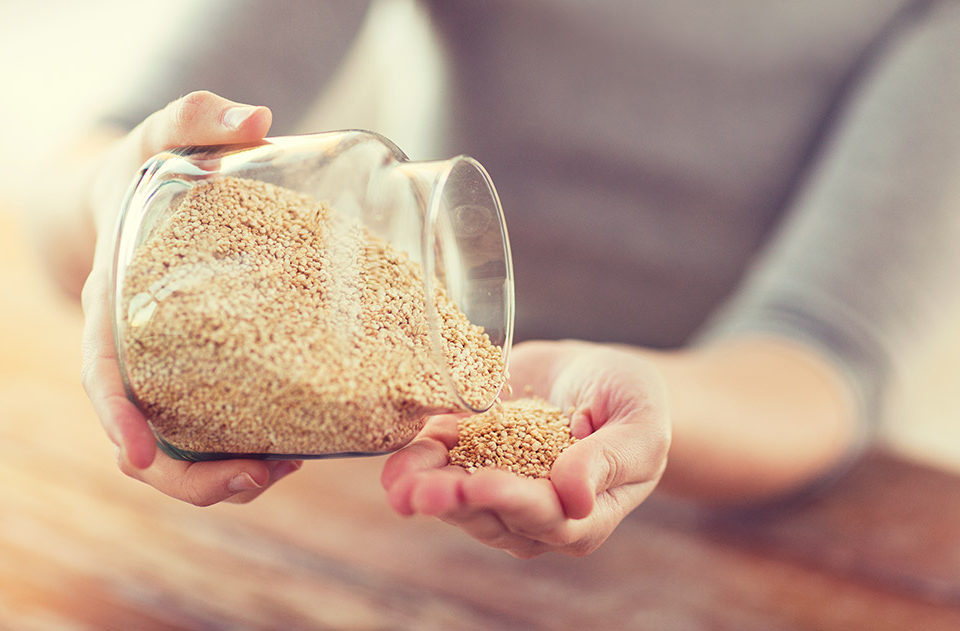16 Interesting Facts About Gluten. Who Knew?!

Grace Van Berkum, R.H.N., is a plant-powered, detox nutritionist and…
Gluten-free is a big craze right now. But just because it’s trendy doesn’t mean it’s right or good for you. Know your facts about gluten, where it comes from, where it’s hidden, and how your body reacts to it. Knowledge is power. Here are 16 interesting facts about gluten you may not already know:
1) Gluten is a group of proteins found in wheat, barley, rye, triticale, malt, brewer’s yeast, wheat starch, and wheat derivatives like wheat berries, durum, emmer, semolina, spelt, and farina. Gluten is everywhere. The dramatic increase in foods containing gluten, in addition to a modification of the grain itself, is causing distress to our bodies.
2) Although oats are technically gluten-free, many brands may be contaminated with gluten during processing. Always buy certified gluten-free oats.
3) In addition to pizza, pasta, bread, wraps, and rolls, gluten is also hidden in most processed foods, including salad dressings, sauces, soup mixes, crackers, and desserts.
4) Gluten is linked to many diseases and conditions. A paper in The New England Journal of Medicine listed 55 “diseases” that can be caused by eating gluten. These include osteoporosis, irritable bowel disease, inflammatory bowel disease, anemia, cancer, fatigue, canker sores, rheumatoid arthritis, lupus, multiple sclerosis, and almost all other autoimmune diseases.
5) Gluten is Latin for glue. Think of glue in your body and intestines. No wonder it wreaks havoc on most people!
6) Celiac disease is the most serious form of allergy to gluten, affecting 1 in 100 people, most of who don’t know they have it. Milder forms of irritation, like wheat allergy and gluten sensitivity, are even more widespread.
7) Gluten is linked to many psychiatric and neurological diseases, including mood disorders, emotional issues, anxiety, depression, schizophrenia, dementia, migraines, epilepsy, neuropathy (nerve damage), and even autism.
8) Common symptoms of gluten sensitivities are stomach pains, burping, heartburn, constipation, diarrhea, brain fog, depression, anxiety, and general fatigue. Pay attention to headaches, joint and muscle pain, and tingling or numbness in the hands and feet. Staying away from gluten should diminish these symptoms within a few short weeks.
9) Just because something is gluten-free doesn’t make it healthy. Many gluten-free products are over-processed and filled with toxic sugars, fats, chemicals, additives, and preservatives. Read your labels and eat as many fresh foods as possible.
10) The easiest way to find out how gluten is affecting you is the elimination/reintegration diet, where you remove all gluten from your diet for 3 to 6 weeks. After 6 weeks, you re-introduce the allergen slowly, watching your body for uncomfortable symptoms over the next 3 days. For this test to be valid, your diet must be 100% gluten-free. It is advised that you get blood work done to determine if you have severe issues. There are tests available that can help identify various forms of allergy or sensitivity to gluten or wheat.
11) Popular nutrient-dense, gluten-free grains include quinoa (rinse saponins off before you cook), buckwheat (does not contain wheat, even though “wheat” is in the name), brown rice, millet, teff, and amaranth. Experiment with all of them!
12) Gluten can be hidden in shampoo, lipstick, and even envelope labels that you lick!
13) A recent study in the Journal of the American Medical Association found that people with diagnosed, undiagnosed, and “latent” celiac disease or gluten sensitivity had a higher risk of death, mostly from heart disease and cancer.
14) Even if you don’t have an existing gluten allergy or wheat sensitivity, it’s best to stay away from them to avoid future problems. Use fresh organic foods and whole grains whenever possible.
15) According to the Healthy Home Economist, common wheat harvest protocol in the United States is to drench the wheat fields with Monsanto’s Roundup several days before the combine harvesters work through the fields. Apparently, when you expose wheat to a toxic chemical like glyphosate, it actually releases more seeds, resulting in a greater yield and easier harvest.
The glyphosate in Roundup is toxic and contributes to inflammation, intestinal wall permeability, and gut dysbiosis, which leads to severe imbalances when left untreated. According to many scientists, doctors, and researchers, gluten isn’t the real problem. The problem is years of consuming the Roundup sprayed on wheat crops for bigger yields.
16) Other hidden sources of gluten include licorice, alcohol, instant coffee, spices, soy sauce, and chewing gum.
For a complete list of gluten foods and hidden sources of gluten see celiac.com.
When in doubt, always do your research!
What's Your Reaction?
Grace Van Berkum, R.H.N., is a plant-powered, detox nutritionist and tropical yoga teacher facilitating empowering & inspiring Gracious Living Lifestyle Retreats in Nicaragua and around the world. Her mission in this lifetime is to spread the message of plant-based nutrition and self-love by teaching people how to eat and live with awareness.











